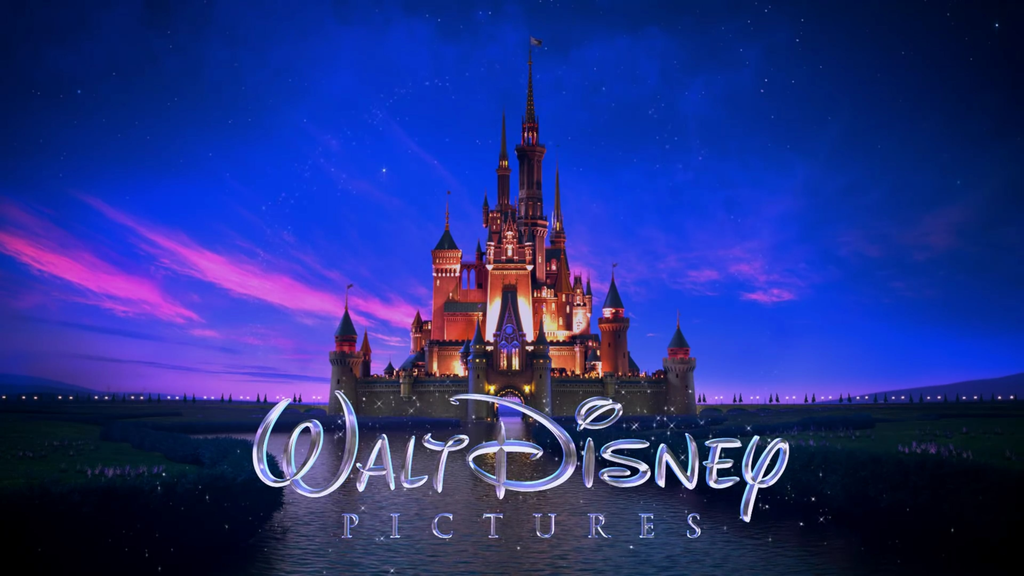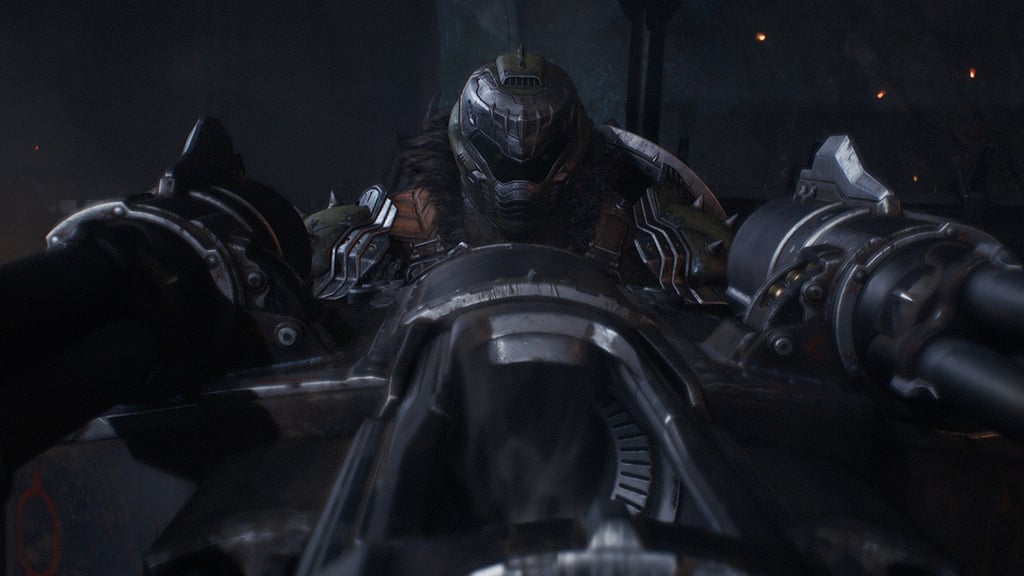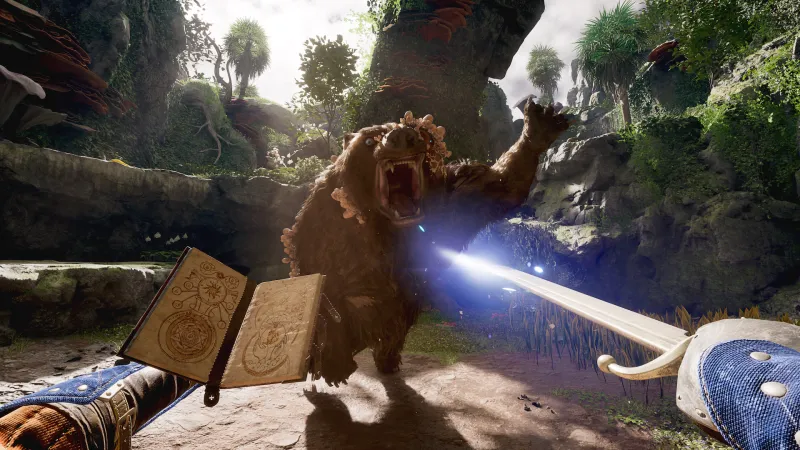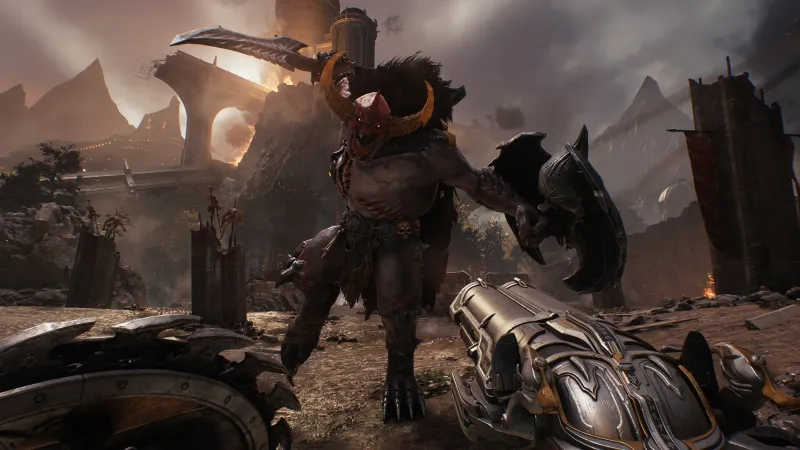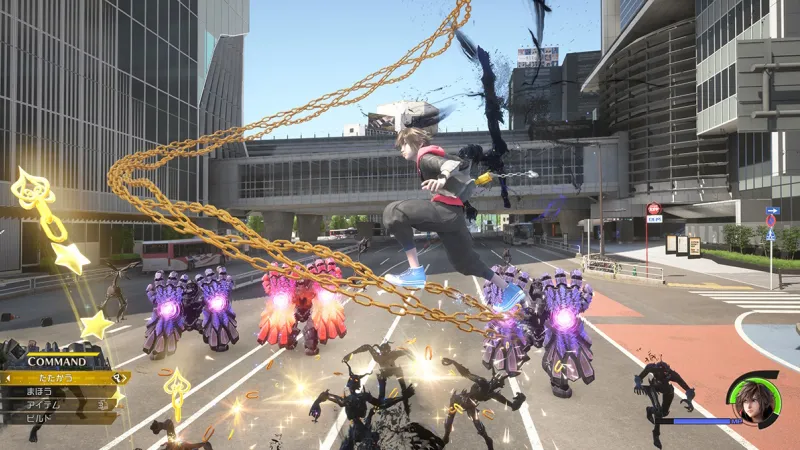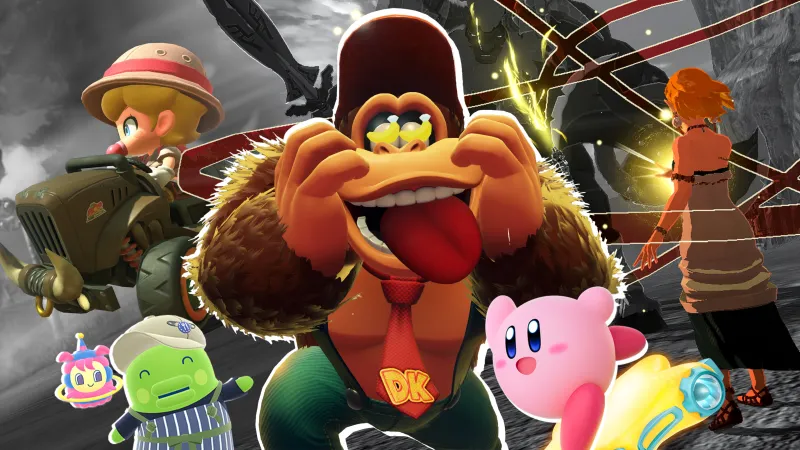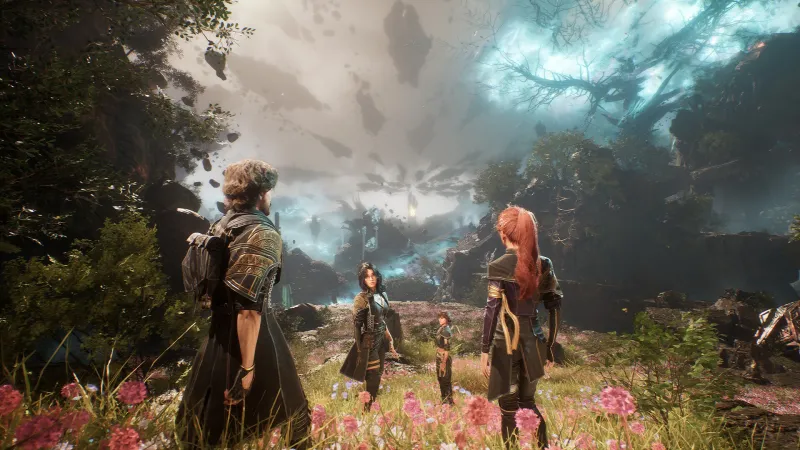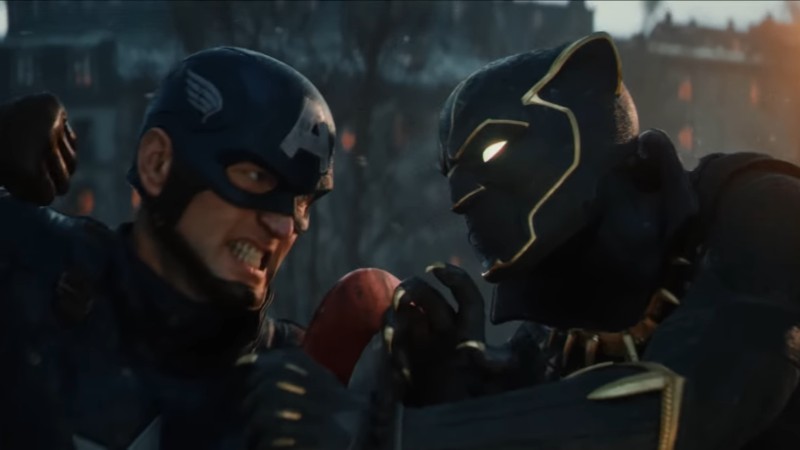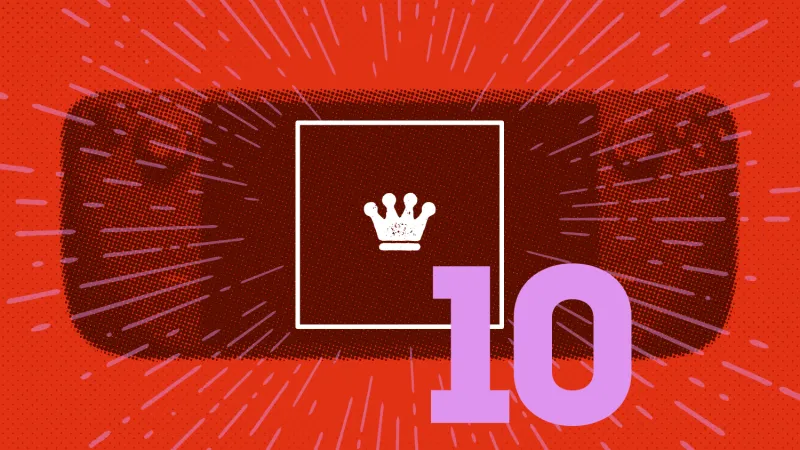Exclusive – Diving Deep Into Critical Role’s Daggerheart
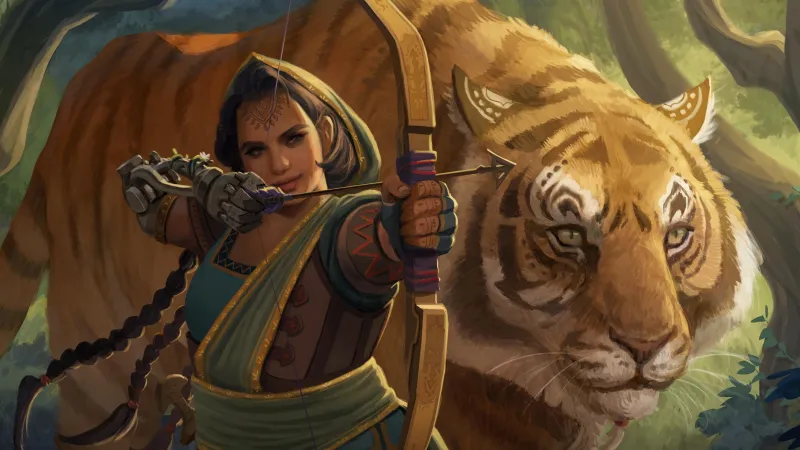

After years of anticipation, Daggerheart is about to be released next week. The tabletop role-playing game comes to us from Darrington Press, the publishing arm of Critical Role, which many players may know from the team's wildly popular role-playing streaming shows. Ahead of the game’s launch, we had the chance to put some questions to lead game designer Spenser Starke. He gave us a rundown on some of the core ideas that set Daggerheart apart from other RPGs like D&D, but also gave an early look at one of the campaign frames featured in the game – a dark and dangerous setting called Age of Umbra.
Age of Umbra challenges players to send their characters into the Halcyon Domain, where the dead come back in twisted forms, animated by a strange, roaming, ethereal mass called the Umbra. Notably for video game players, Critical Role’s Matthew Mercer wrote the campaign frame specifically citing FromSoftware games like Dark Souls as an inspiration for the style of play.
Mercer will be running an eight-part mini-series set in Age of Umbra, with a Session Zero on May 22, and the first full episode airing on May 29. You can watch the new show on Beacon, Twitch, or YouTube.
Check out our complete interview with Spenser Starke below, as well as extensive art galleries from the soon-to-release Daggerheart game. We also have two exclusive book spreads from the Age of Umbra section of Daggerheart, which you can read through by clicking the first gallery below, and tapping the expand button in the upper right of the image to enlarge.
Game Informer: How is Daggerheart different from other role-playing games on the market? How is the feel of playing different from that of familiar games like D&D?
Spenser Starke: Daggerheart is a heroic roleplaying game designed from the ground up to be a collaborative, narrative-forward experience that supports both heartfelt storytelling and cinematic combat! So if the reason you play is to tell an awesome story with your friends, Daggerheart is almost certainly for you. It’s specifically designed to be light enough at level one that you can jump right into your first session without knowing much, but crunchy enough that as you level up through a campaign, there are plenty of interesting choices to make and new mechanics to learn!
What can you tell us about the core dice mechanic of the Hope and Fear dice? How does that system shape play? Was there a particular reason to focus on 12-sided dice?
The Duality Dice are one of my favorite features of the game–they really help to inject narrative into every roll. You choose one d12 to represent Hope and another to represent Fear, and whenever you’re making an action roll, you’ll use both the total of the roll (including any modifiers) AND whether the Hope die or Fear die rolled higher. This gives you results like “Success with Fear” or “Failure with Hope,” which will impact the consequences of the roll! It allows for there to be a spectrum of success and failure during play that encourages everyone to play to find out what happens next.
The use of the d12 came about primarily because I adore d12s. I love their shape and I also really like their balance of swinginess; they give more variation than a d6 but less than a d20. Additionally, two d12s rolled together create a statistical curve that centers around 13, meaning the players know their dice are generally going to hit around that value. This makes even small modifiers really valuable! I could gush about dice mechanics for forever, but I will spare you from the pain.
Daggerheart also leverages physical cards as an aspect of play. Can you talk about how those factor in? Is the use of cards central and necessary to the experience, the way that minis might be in a tabletop skirmish game?
The cards in Daggerheart are designed as a shorthand way of building and operating your character. They make onboarding during a session zero much easier–we really wanted an experience that got you out of the book and onto the page as fast as possible. So choosing your level options from cards and placing them in your loadout to make that process as streamlined and accessible as possible, as well as having rad art across EVERYTHING in the game was something we were really excited about. There are ways to play without the cards using a loadout sheet instead, but we find the experience with the cards to be our favorite way to run the game!
What are some of the features that make character creation and development interesting in Daggerheart? As a design team, did you have particular goals you hoped to reach in terms of the way characters come together over the life of a game or campaign?
Experiences are something that really stand out to me as a particularly exciting component of Daggerheart – they are essentially narrative tags that you work with your GM to create about the kinds of experiences you’ve had as a character already, and when you leverage that knowledge while performing an action, you can get a bonus to the roll. As talked about above, the card system also makes character creation fast, visual, and exciting! You get to combine certain domain decks together to form your character’s loadout at each level. Additionally, the background and connection questions actively encourage a player to breathe life into their character as well as providing the GM narrative fodder for how to make the characters at their table the protagonists in the campaign.
One of the significant challenges of tabletop role-playing (for game makers and playgroups) is the frequently dramatic difference in experience levels between longtime players and newcomers. How does Daggerheart approach that dilemma, specifically around welcoming new players, while also including enough depth for experienced players?
We have done our best to make the onboarding process for new players as streamlined as possible, while offering the opportunity to opt into more crunch as players level up in a campaign. We also, where possible, attempted to put the bulk of the “crunch” of the system into the choices players make in downtime, between sessions, or during level-ups, as opposed to in the moment at the table, to avoid stopping downplay as much as we can.
For folks who may not be plugged into recent happenings with Critical Role, how will the launch of Daggerheart affect the streaming, shows, and other content that Critical Role produces?
We’re launching Age of Umbra very soon! It’s a series run by Matt Mercer using the Age of Umbra campaign frame, a dark, souls-like setting that is extra deadly. And much more to come, we’re just getting started!
Today, you’re sharing more details about one of the campaign frames in Daggerheart. Would you describe what you mean by a campaign frame compared to a dedicated campaign setting?
A campaign frame is kind of a starter kit for running a campaign in Daggerheart! They’re usually about 10-20 pages and focus on a specific subgenre or concept around which your campaign can be structured. They provide an overall narrative hook, some interesting lore you can incorporate into your campaign, a map of the region you can customize, a starting scenario to kick off your first session, and some mechanical additions or adjustments that impact the way the game runs! We’re hoping campaign frames provide everything you need to jump in, while not being so much they feel stifling to you and your table’s creativity.
What is The Age of Umbra? What are some of the defining characters, groups, or setting features that make it special?
Age of Umbra is a dark, deadly, souls-like campaign frame heavily inspired by media like Kingdom Death Monster, Elden Ring, and Dark Souls, written by Matt Mercer. It’s full of evocative lore and horrifying flavor, but one of my favorite aspects is the concept of the Sacred Pyres that exist all throughout the land, burning bright and providing refuge from the Umbra. That plays into one of the downtime mechanics that requires anybody resting outside the light of a Sacred Pyre to have a party member or two keep watch during the night… or bad things might happen.
Matthew Mercer has likened The Age of Umbra to video games like Dark Souls. How far does that comparison bear out? Would you suggest that dedicated fans of video games like Elden Ring might want to consider it?
The campaign frame is absolutely for fans of Elden Ring, Dark Souls, or really anyone who wants to run a dark and deadly story. Matt really outdid himself with this one.
Are there other campaign frames in Daggerheart? How do they change the experience of play? Is there one you’d highlight, in brief, as an experience at the other end of the tonal spectrum from The Age of Umbra?
Yes! There are six campaign frames in the Daggerheart Core Rulebook that have a wide range of genre and tone. They really form the subgenre of fantasy that you’re looking to play in, from lore to mechanics to weapons and everything in-between. I think on the other end of the spectrum from Age of Umbra (depending on what your spectrum is like!) is either Beast Feast, which is a light-hearted dungeon crawl about cooking what you kill, heavily inspired by Delicious in Dungeon and Monster Hunter World, or Motherboard, which is our sci-fantasy setting where all magic is technology, inspired by Horizon Zero Dawn and Mortal Engines.
When and how can players check out Daggerheart for themselves?
The game launches on May 20th on the Critical Role shop and in your friendly local game store, and can be found everywhere games are sold shortly after that!
What's Your Reaction?
 Like
0
Like
0
 Dislike
0
Dislike
0
 Love
0
Love
0
 Funny
0
Funny
0
 Angry
0
Angry
0
 Sad
0
Sad
0
 Wow
0
Wow
0



















